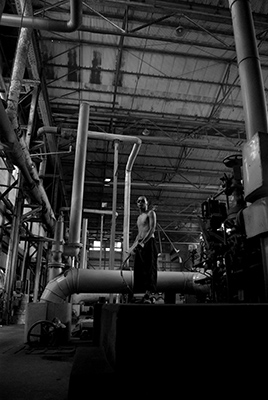War of Java, Do You Remember? #2 is a part of Jompet Kuswidananto’s extensive research project that looks into the complexities of Indonesian cultural history. The War of Java was fought between 1825 and 1830, sparked by the rebellion of Prince Diponegoro in response to the plans of Dutch colonizers to build a road across land where his parents’ tomb was located.
For Jompet Kuswidananto, Indonesian society is in a permanent transitory state. It evolves amidst layers of living traditions, in the interstices of the aporias of colonial, postcolonial, and neocolonial states, and in the space between the ever-blurred and ideological distance marking the “traditional” and the “modern.” This ever-transitory reality forever bears the imprint of the colonial scene, just as those roads built over tombs. Thus, the War of Java has never ended, but rather persists while continually changing its face. Jompet Kuswidananto is interested in the images and narratives that live and renew themselves in this “haunted” zone of contradictions, and particularly in the way they shape bodies, and the way bodies negotiate those histories.
War of Java, Do You Remember? #2 recollects such negotiations from Indonesian colonial history. In the middle of the nineteenth century, when the Dutch began to build sugar factories in the north coastal region of Java, a particular practice emerged among the plantation workers and sugar farmers. A ritual called “cembengan” was created, which accompanied the initial processing of the sugar cane into sugar. This ritual was conducted amidst the large machines that ground the sugar cane. Workers performed a dance that invoked the spirits of their ancestors. In the context of the colonial factory, the ritual addressed the experience of colonialism and factory work as a new cosmological bond, expressed as a bodily-mimetic relation between humans and machines, an inversion of the orthodox-”modern” perception that divides the magical and the mechanical. This dance, perhaps, was not “magic”—but rather a way of relating to and disarming the magic of the modern factory regime, of capitalist exploitation, and of the colonial spell.
Jompet Kuswidananto, born 1976 in Indonesia, lives and works in Jakarta

